
The History
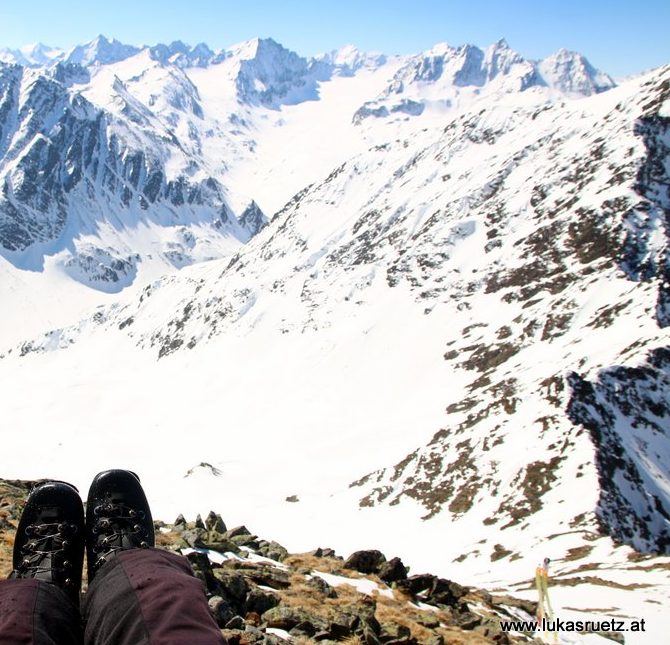
The 2016/17 season has been the start of a very special ski touring boot. After several prototypes, a lot of time and lifeblood our baby was finally ready.
The feedback was overwhelmingly positive right from the beginning. „Finally a boot that is pleasant to climb without bootfitting and at the same time performs well on the descent. It fits exactly the needs of ambitious ski-mountaineers!“
So, what makes the Fischer Travers so successful?
Best fit & weight under 1 kg but high downhill performance at the same time
The Travers has a relatively high-volume last and thus feels like slippers on your feet. It is one of the very few ski touring boots in which almost everyone feels comfortable right from the beginning. Without a break-in phase, without adaptation, without other tedious procedures. I have already wandered 30 km in the Andes in one day with them and skis on my backpack – it is like a light mountaineering boot. At the same time, the Travers performs extremely well on the descent.
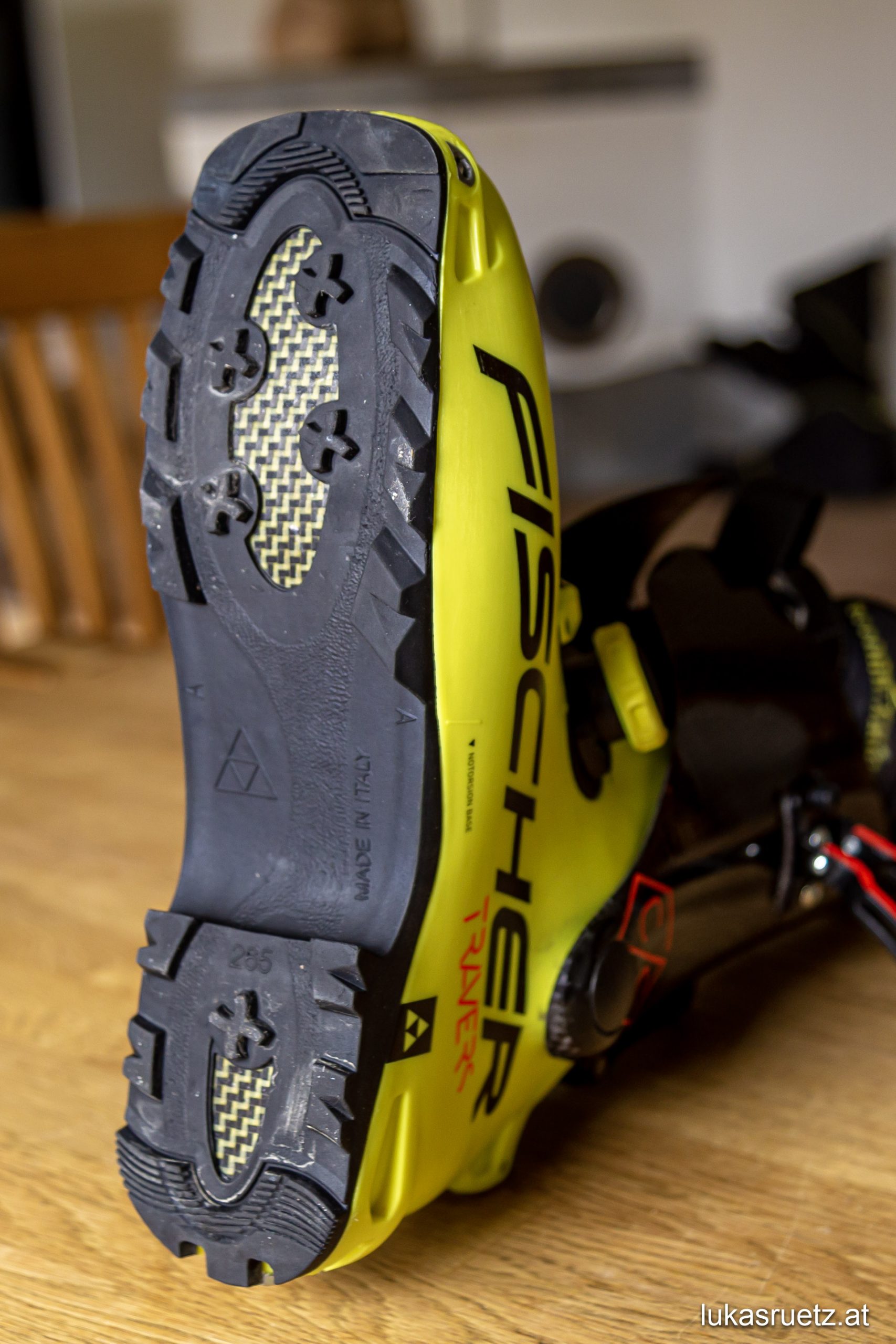
No bells and whistles
The boot is clean. Free from meaningless innovations or supposedly groundbreaking inventions (which actually don’t solve a real problem and often lead to recalls). Everything that has proven itself on the market is united and optimized in the Travers.
Perfect closure of the Boa system through pulley guides
The Boa system instead of a lower buckle has proven for quite some time in various ski touring boots. This means that the boot closes tightly at the instep for the heel hold and only slightly at the toes for the necessary blood circulation. Thus there is a perfect distribution of the closing force. Unique to the Travers: the pulleys for the plastic-sheathed steel cable. This eliminates the wear of the system as with boots with Boa System without pulleys. I’ve never had rope issues – not even in a prototype.

Simple, efficient ski-walk mechanism

There is hardly another part of ski touring boots in which more energy has been put into unnecessary improvements in recent years. The Travers has a solid, simple, maintenance-free lever for ski to walk mode that works reliably.
No annoying, additional closure strap in addition to the upper buckle
Because you simply don’t need it for ski touring. Ski touring is mountaineering in winter, not alpine skiing.
Casual design
The boot doesn’t look strange-futuristic. However, still presents trendy and sporty.
Fischer’s technology for a natural V-position of your feet. Helps your knees and hip to stay healthy.
Full crampon compatibility
Despite the crampon compatibility the Travers offers a tremendously short sole length in all sizes. This gives you a much better feeling when climbing on rock. 286mm in size 26,5!
Palau liners
The top models (CC & CS) of the collection are equipped with liners from the French manufacturer Palau. In my opinion the best liner on the market.
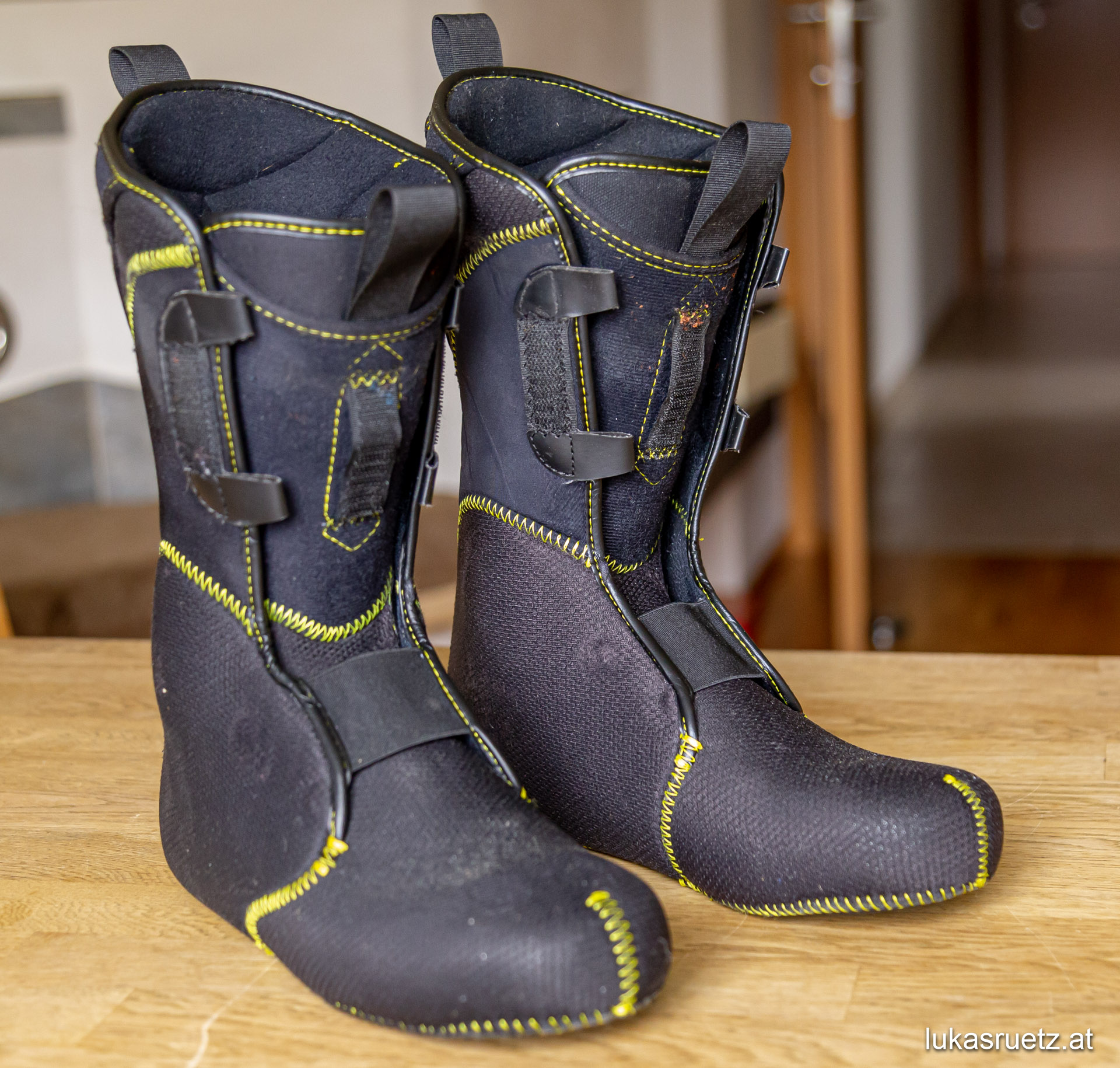
Low resistance cuff rotation
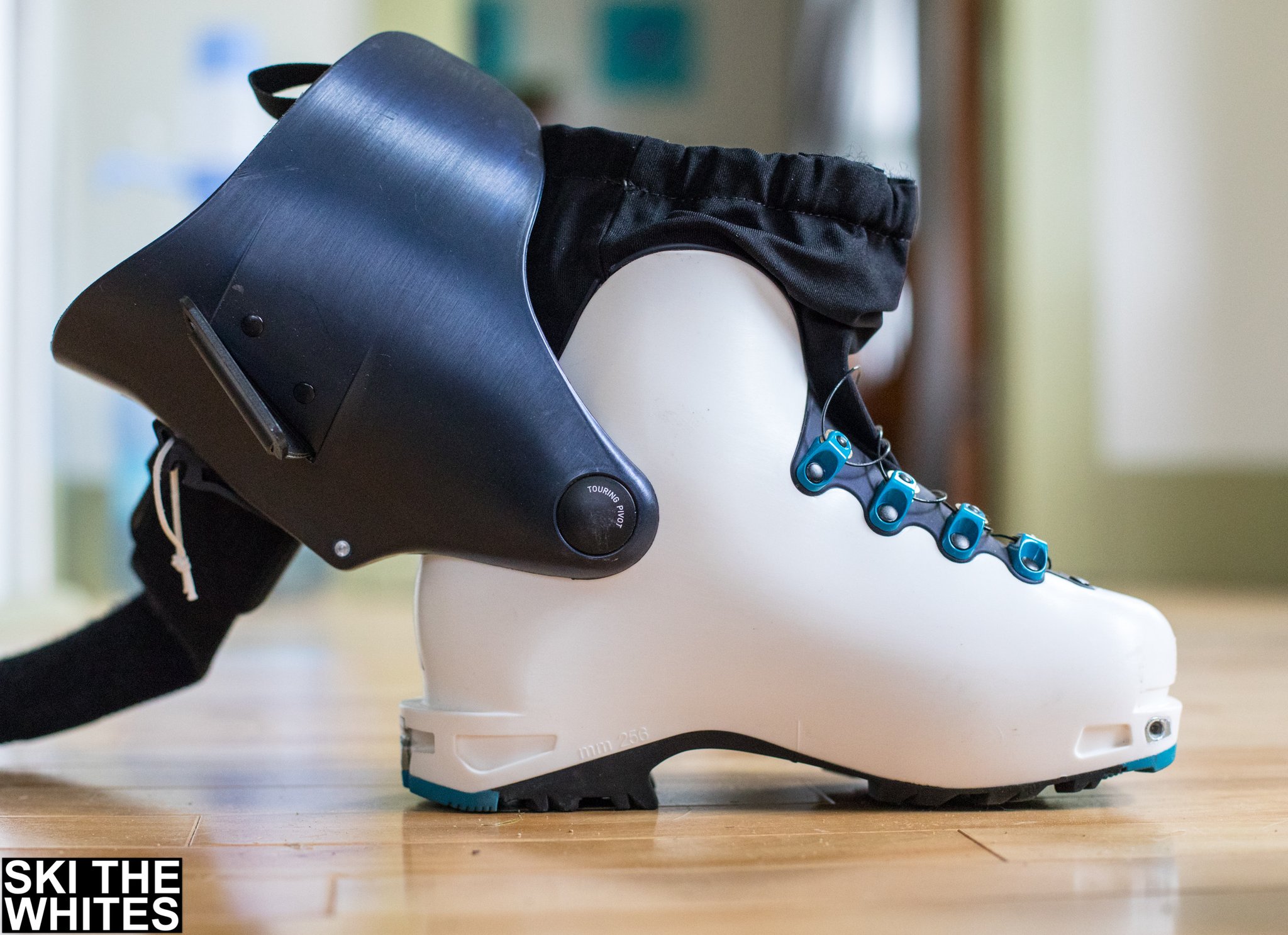 The cuff rotation is 80°. That’s a nice feature, but in practice it doesn’t help – because you can use a maximum of 50° in long moves. Rotation of the cuff without resistance is much more important. The heavier ski touring boots hardly offer this – even if they often have a rotation angle of 60° and more. One can feel in every step that there is a resistance because the cuff touches the shell. The Travers shows almost no resistance.
The cuff rotation is 80°. That’s a nice feature, but in practice it doesn’t help – because you can use a maximum of 50° in long moves. Rotation of the cuff without resistance is much more important. The heavier ski touring boots hardly offer this – even if they often have a rotation angle of 60° and more. One can feel in every step that there is a resistance because the cuff touches the shell. The Travers shows almost no resistance.
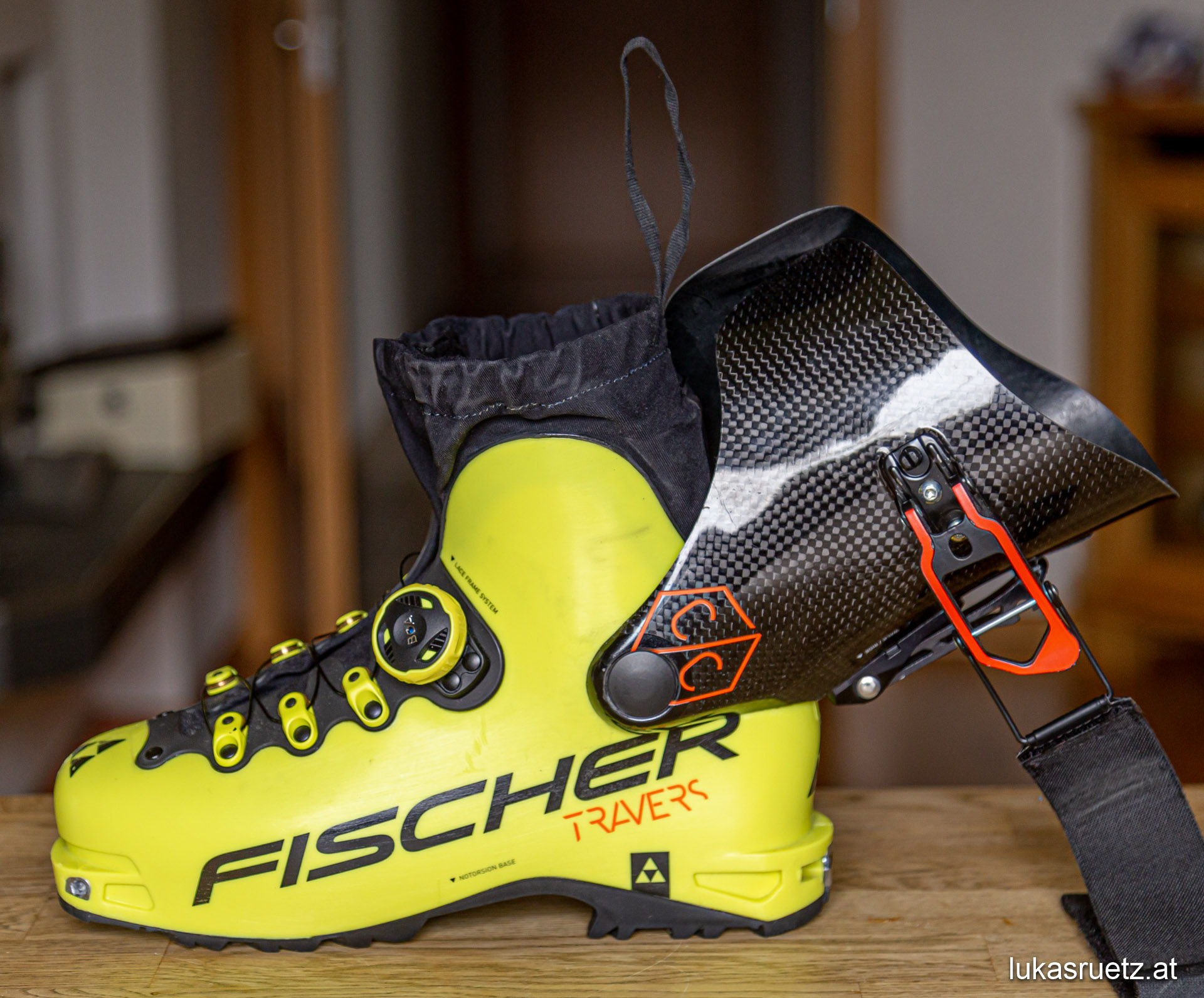
Water protector / gaiter
The gaiter is impermeable to water due to the fact it is plastic-sheated on the inner side. Additionally it has a Velcro which sticks to the liner velcro, so it can’t get out of place.
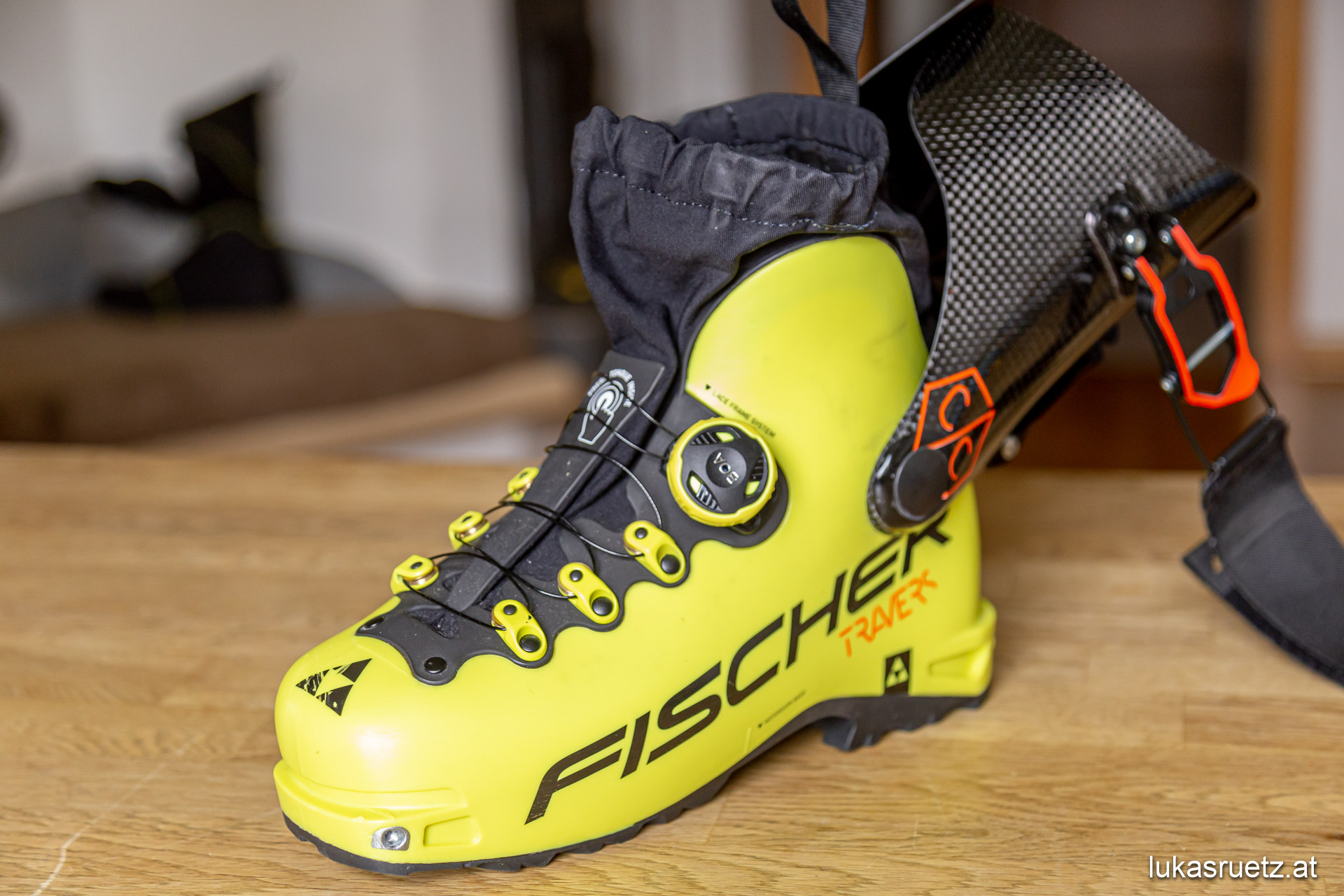
Fischer Travers in its dedication
Die Travers models
Encouraged by the positive feedback to the Travers, we are expanding the collection to cover the entire spectrum of ski touring enthusiasts. Now, there are four different Fischer Travers models in different performance and price categories. All boots have the same structure. They differ only in the materials used.
Fischer Travers CC – The mashine
-
- Flagship of the collection
- CC stands for Carbon Cuff
- Forward lean: 17° – More than the low-cost Travers models, making it easier to get on your knees and thus higher downhill performance, but also more demanding to ride for your thighs.
- Price: 749 Euros
- Weight: 930 g (at 26.5)
- Material: Grilamid shell, carbon-aramid sole, full-carbon cuff
- Colour: Yellow with black and red accents
- Liner: Palau (thermoformable)
- Sizes: 25,5 to 29,5 Mondopoint
- The CC is the flagship of the collection. It is the lightest representative and at the same time the stiffest of all Travers models. The cuff is completely made of carbon and therefore is extremely stiff and light. In addition there is an increased forward lean of 4°. The boot is much more aggressive than all other Travers models and is definitely a weapon for high-performance users who consciously don’t want a natural flex behavior of the cuff.
Photos of the Travers CC
Fischer Travers CS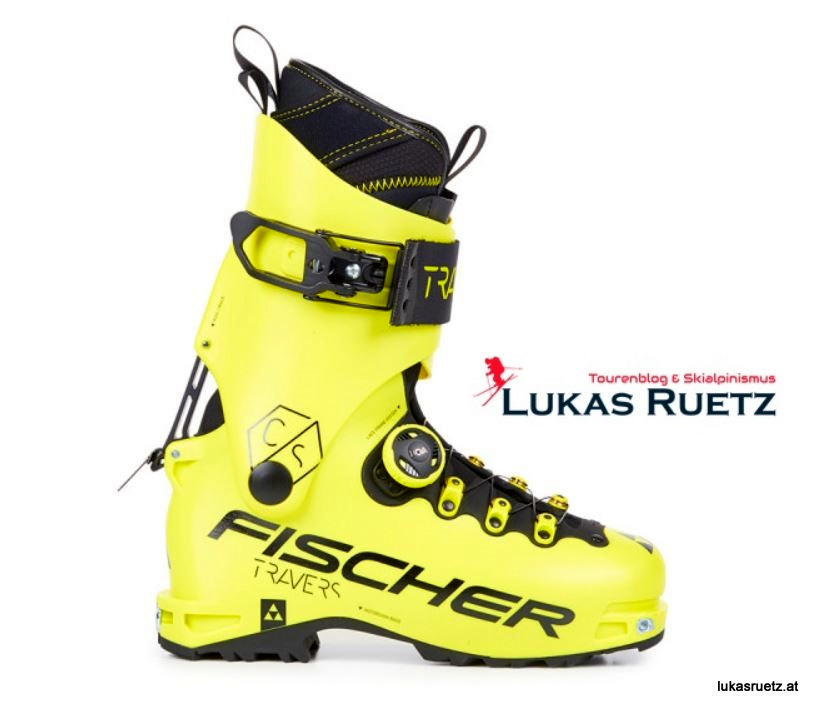
-
- CS stands for Carbon Sole
- Price: 649 Euro
- Weight: 990 g (at 26.5)
- Forward lean: 17° – More than the lower priced Travers models, making it easier to get on your knees and higher performance, but also more demanding to ride for your thighs.
- Material: Grilamid shell, Grilamid cuff, Carbon-Aramid sole
- Colour: Yellow with black accents
- Liner: Palau (thermoformable)
- Sizes: 24,5 to 29,5 Mondopoint
- The Travers CS is the former top model „Travers Carbon“. In my opinion THE boot for the ambitious ski tourer. The cuff flexes more than its new, extremely stiff brother Travers CC.
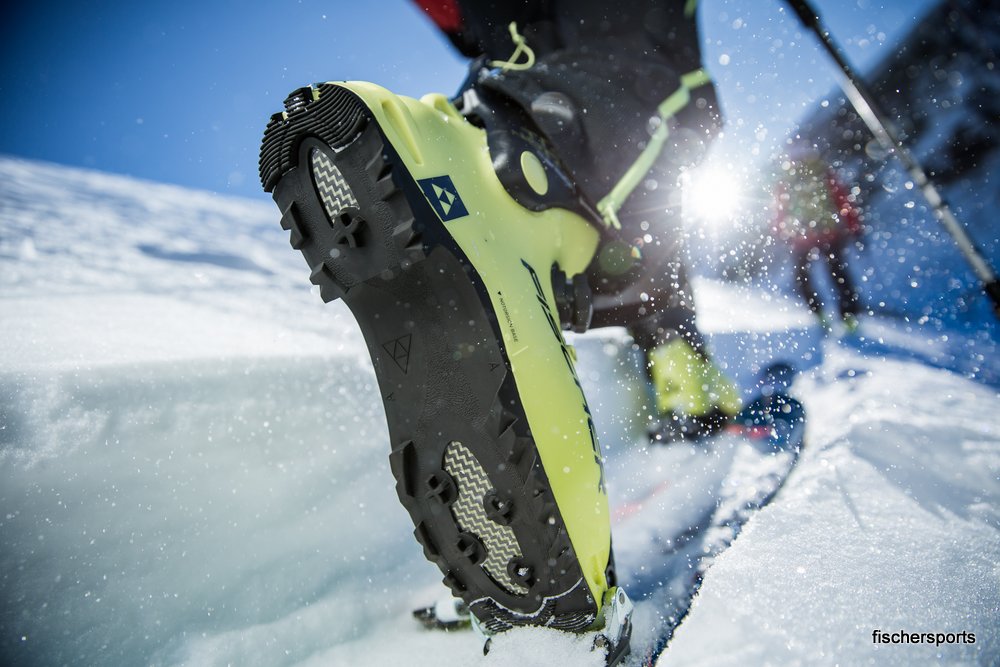
Fischer Travers GR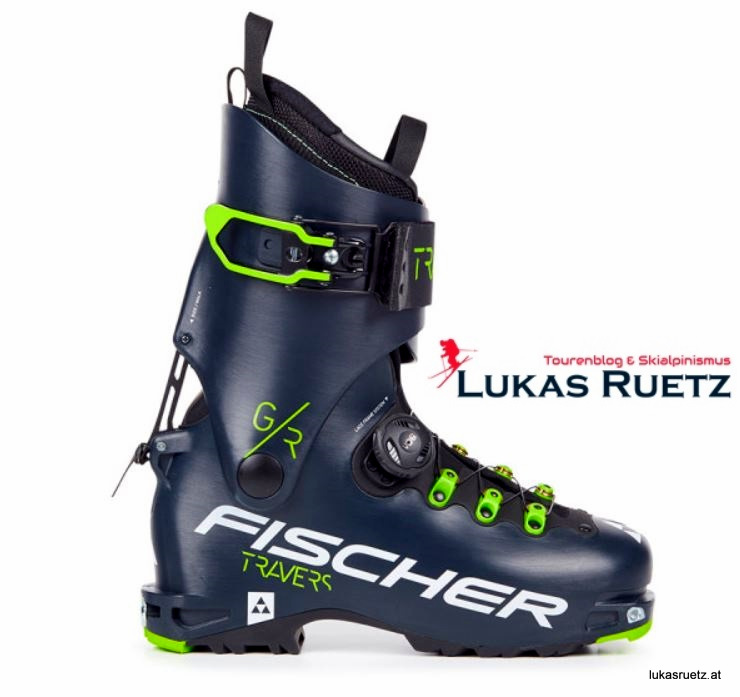
-
- GR stands for Grilamid
- Price: 549 Euro
- Weight: 1090 g (at 26.5)
- Forward lean: 13°
- Material: all Grilamid
- Colour: Black with green accents
- Liner: Fischer Thermoshape (thermoformable)
- Sizes: 23,5 to 29,5 Mondopoint
- The Grilamid is positioned in the middle of the collection. Grilamid is lighter and at the same time stiffer than the PU version. Stiffening materials such as carbon are not used in this model.
Fischer MY Travers GR
-
- women’s version
- Identically to Travers GR
- Price: 549 Euro
- Weight: 1090 g (at 26.5)
- Sizes: 23,5 to 29,5 Mondopoint
- Color: White shell, black cuff, blue accents
- Full review from Steffi here in German
Fischer Travers TS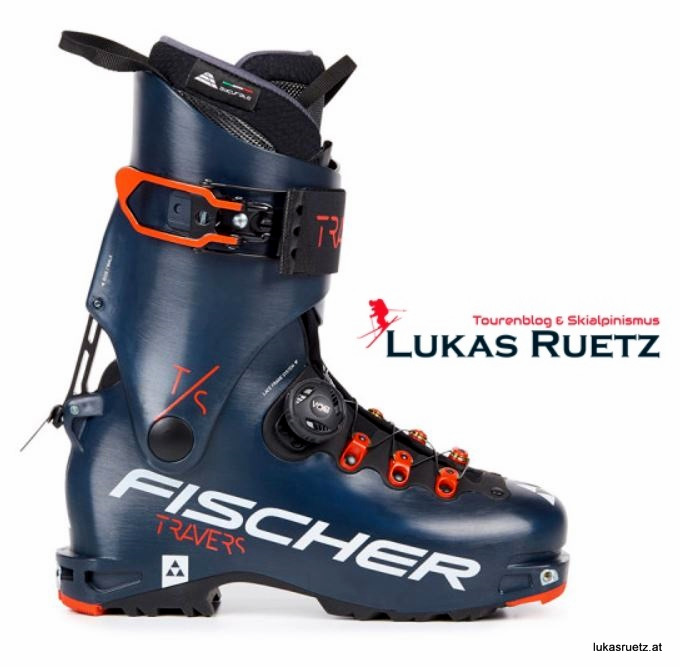
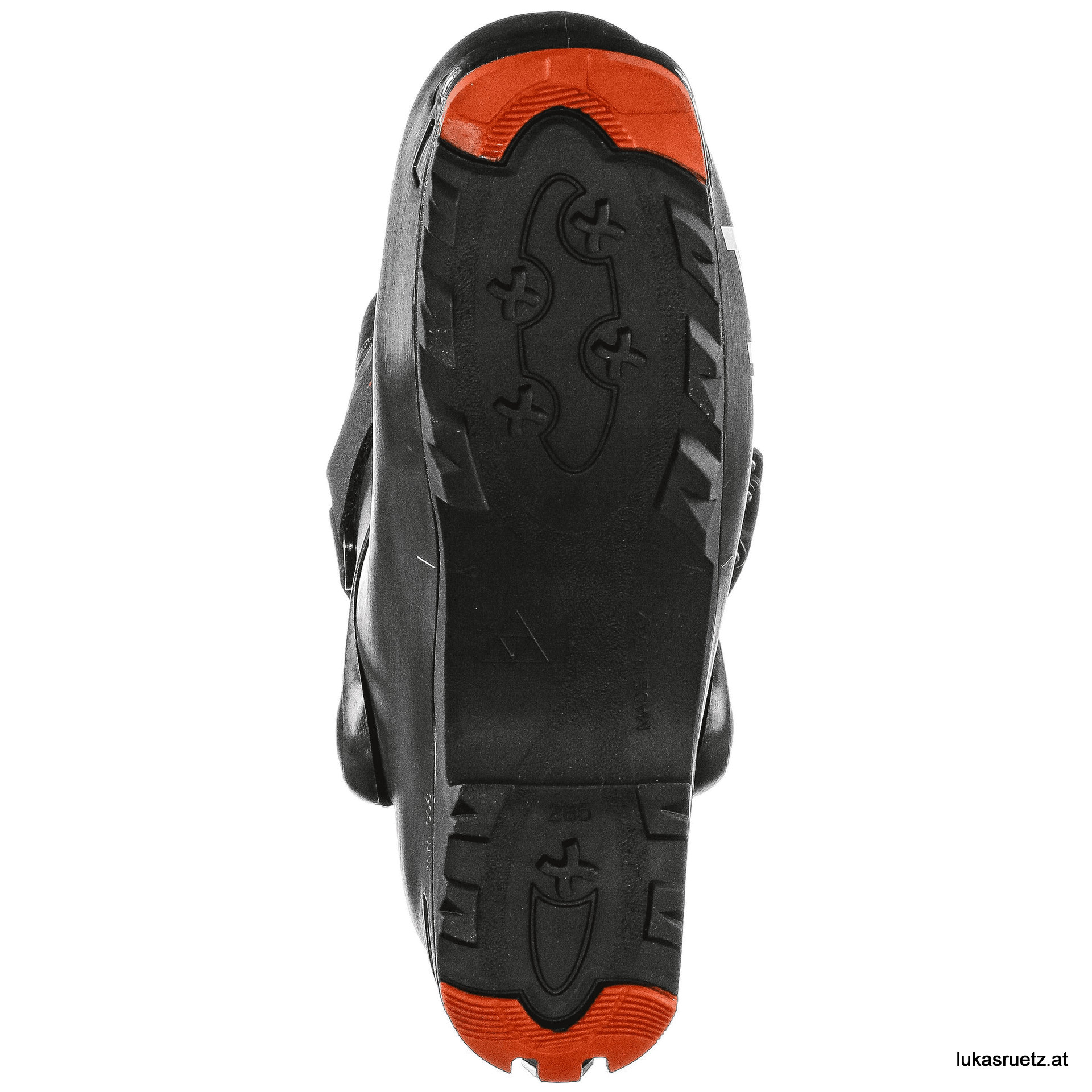
-
- TS stands for Thermoshape
- Price: 449 Euro
- Weight: 1190 g (at 26.5)
- Forward lean: 13°
- Material: Polyurethane
- Colour: Black with red accents
- Liner: Fischer Thermoshape (thermoformable)
- Sizes: 23,5 to 29,5 Mondopoint
- The Thermoshape marks the lower end and is especially suitable for beginners. Instead of the high-quality Grilamid, the Travers-TS uses polyurethane (PU) plastics to offer the boot in this price category. This makes the boot only a little less stiff than the Grilamid versions, but even adds weight.


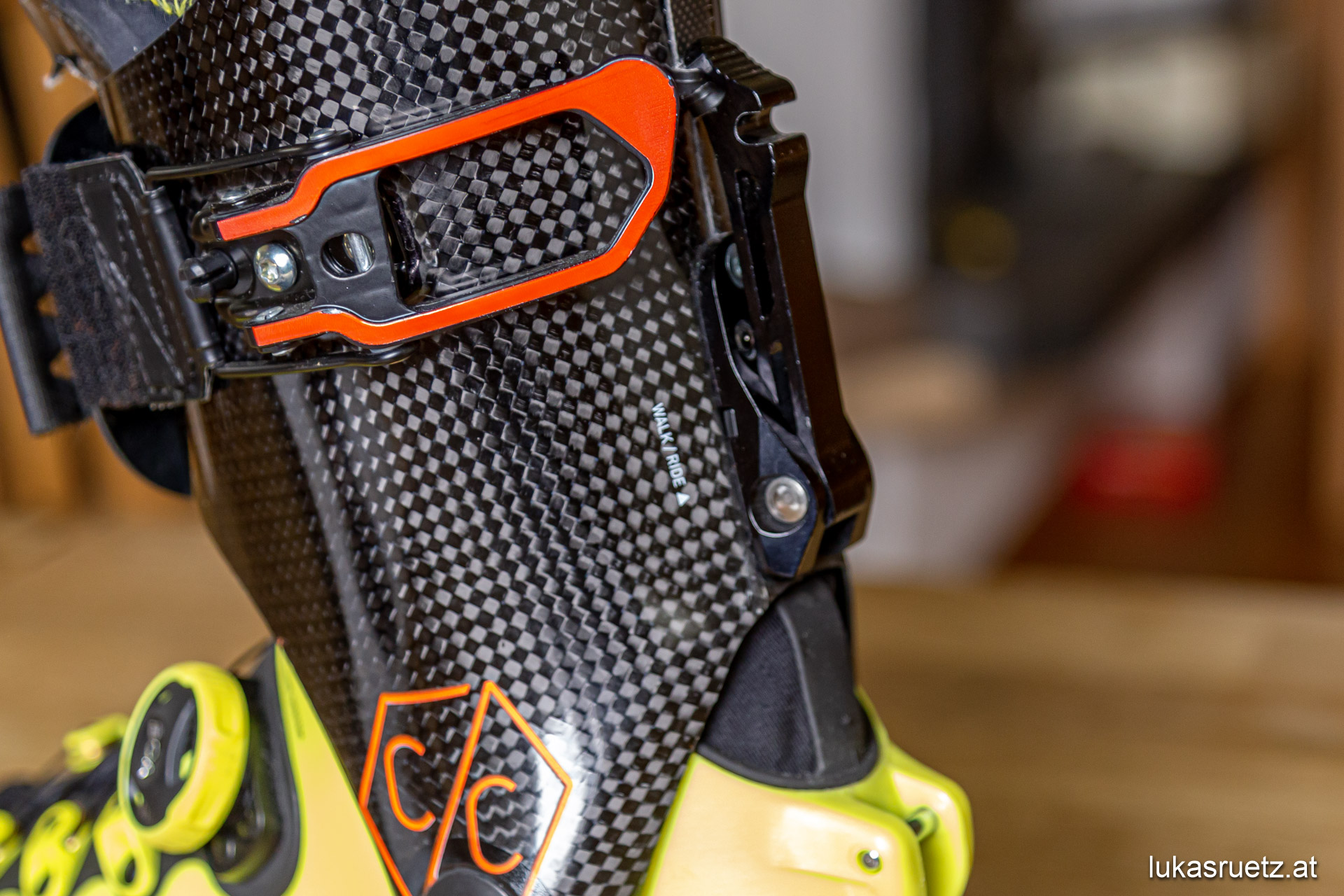
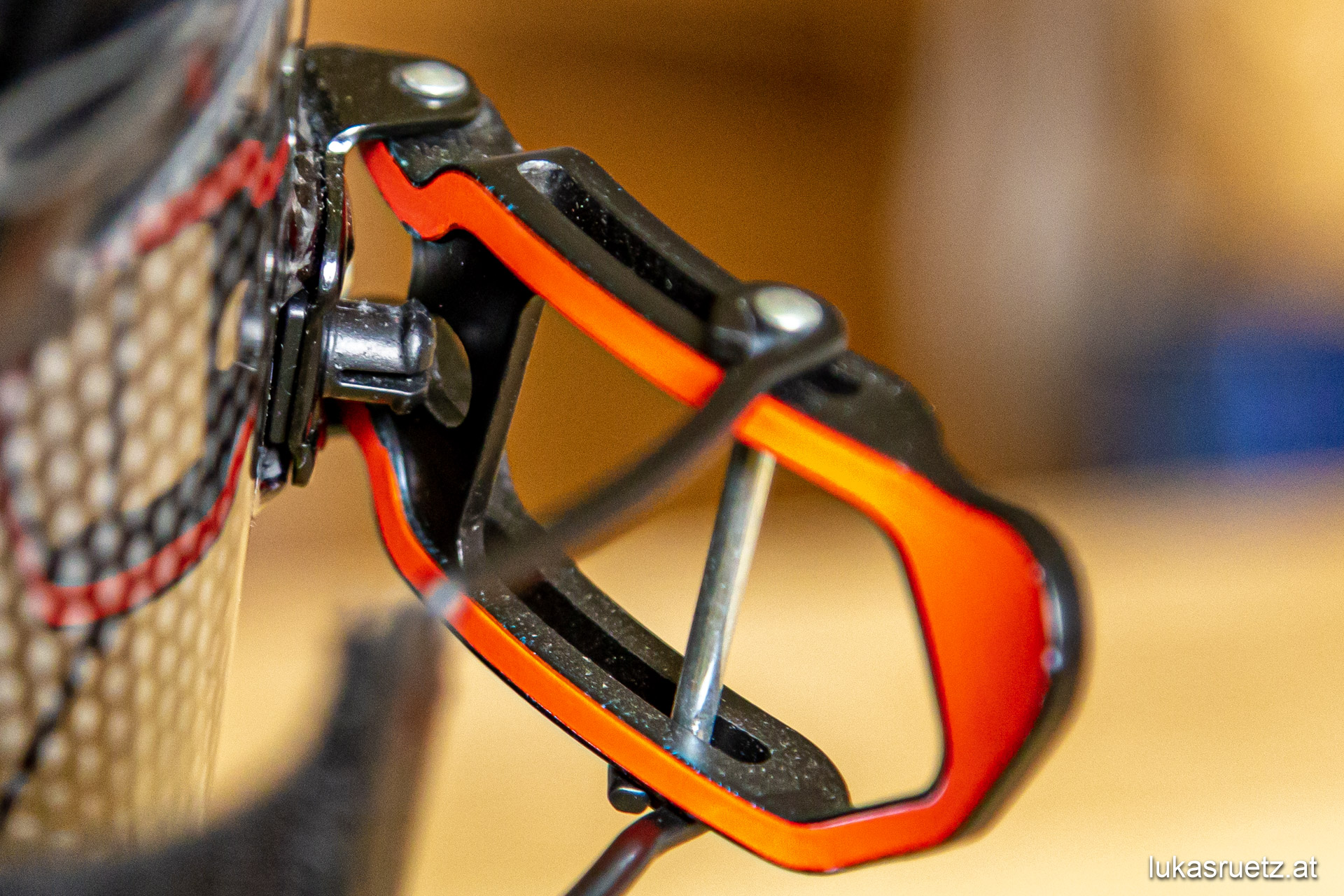
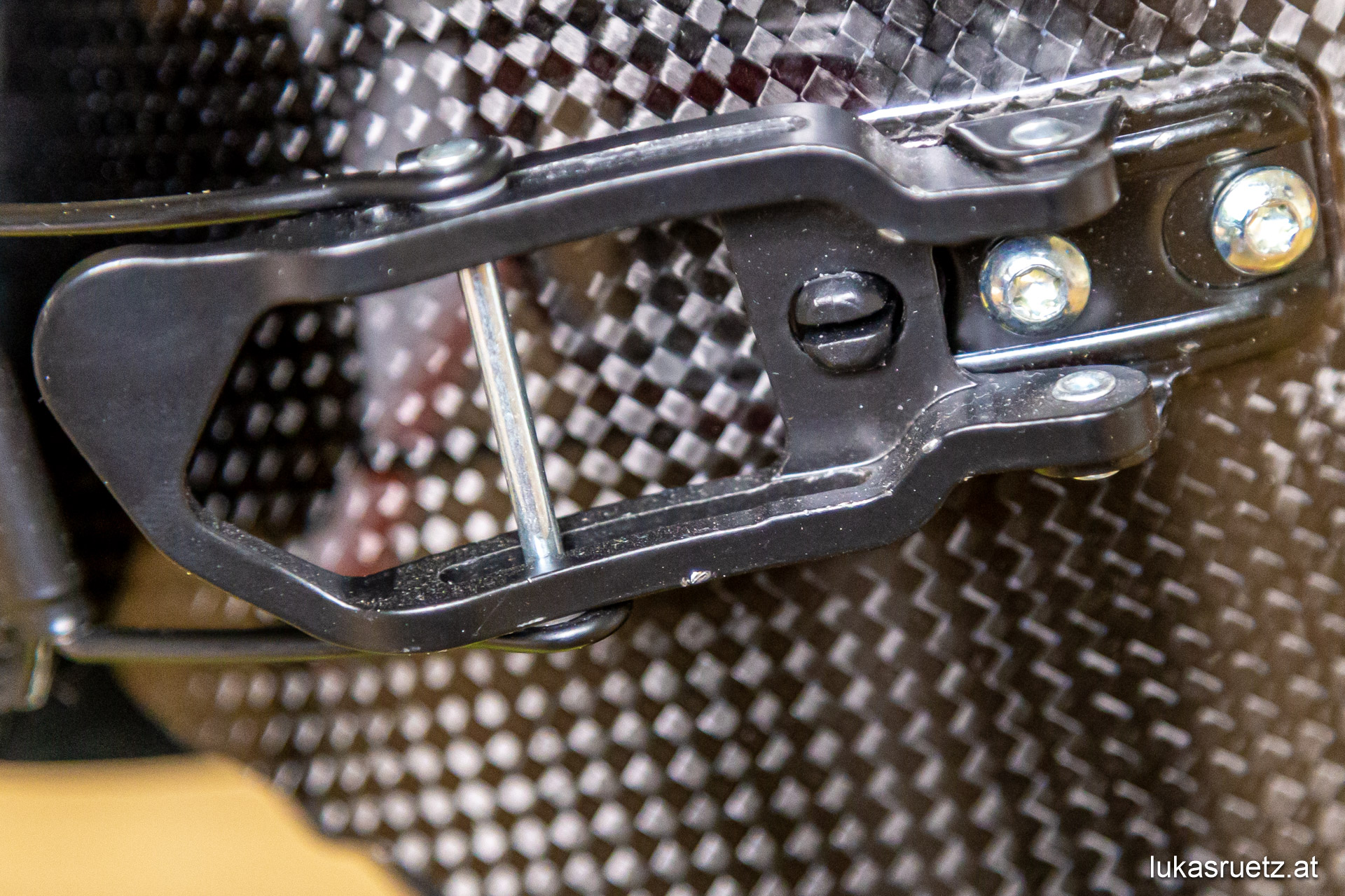
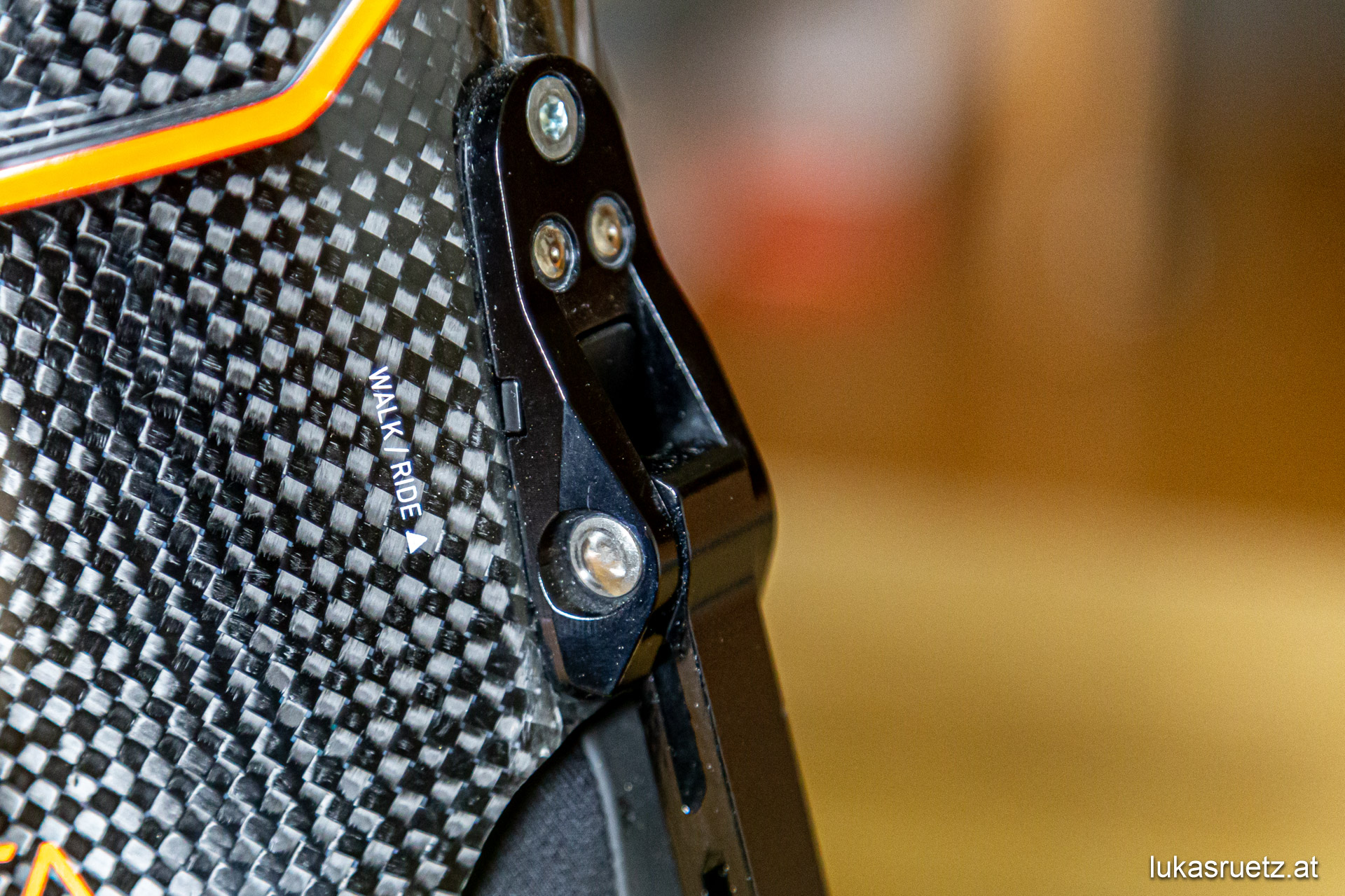
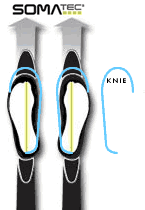
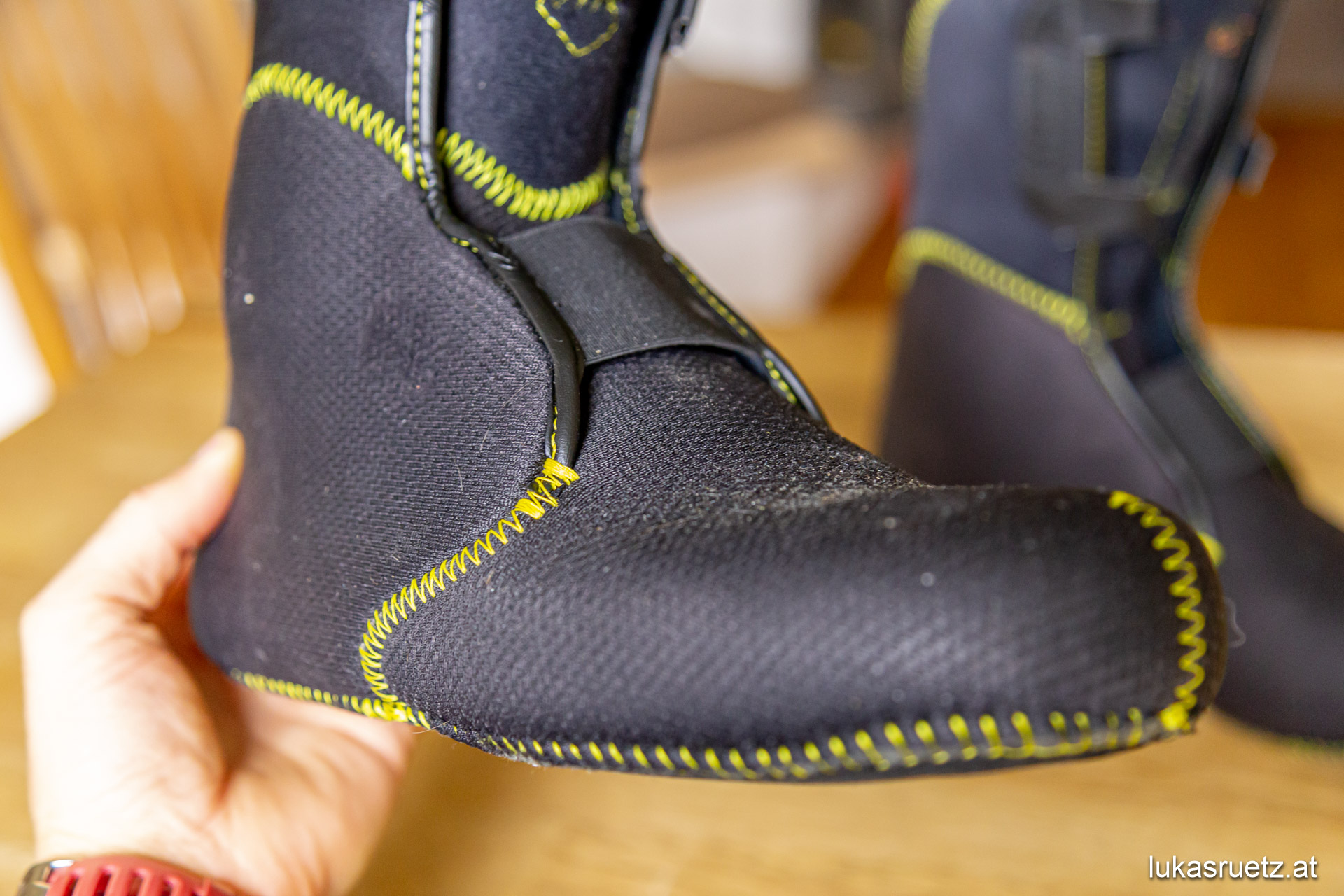
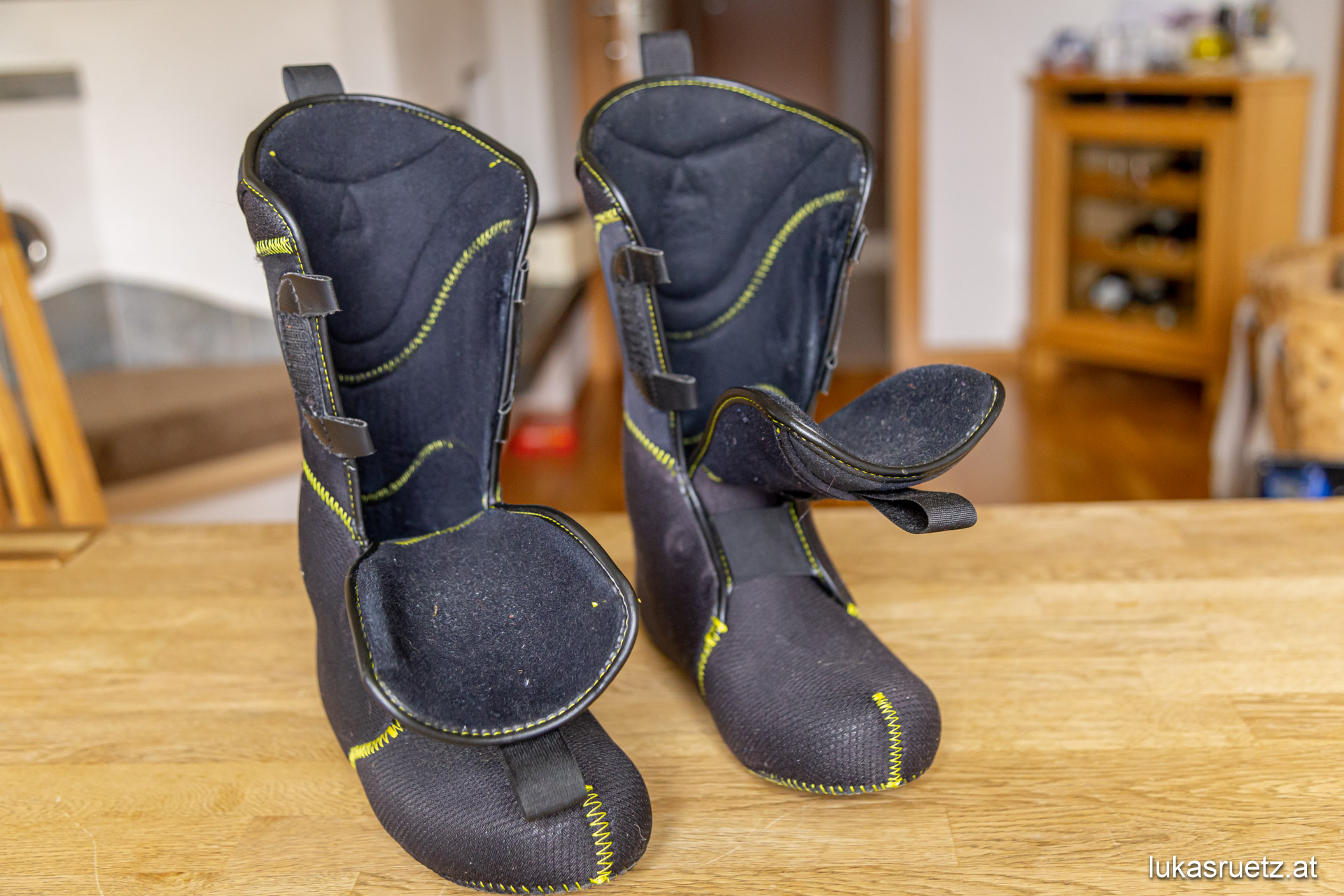
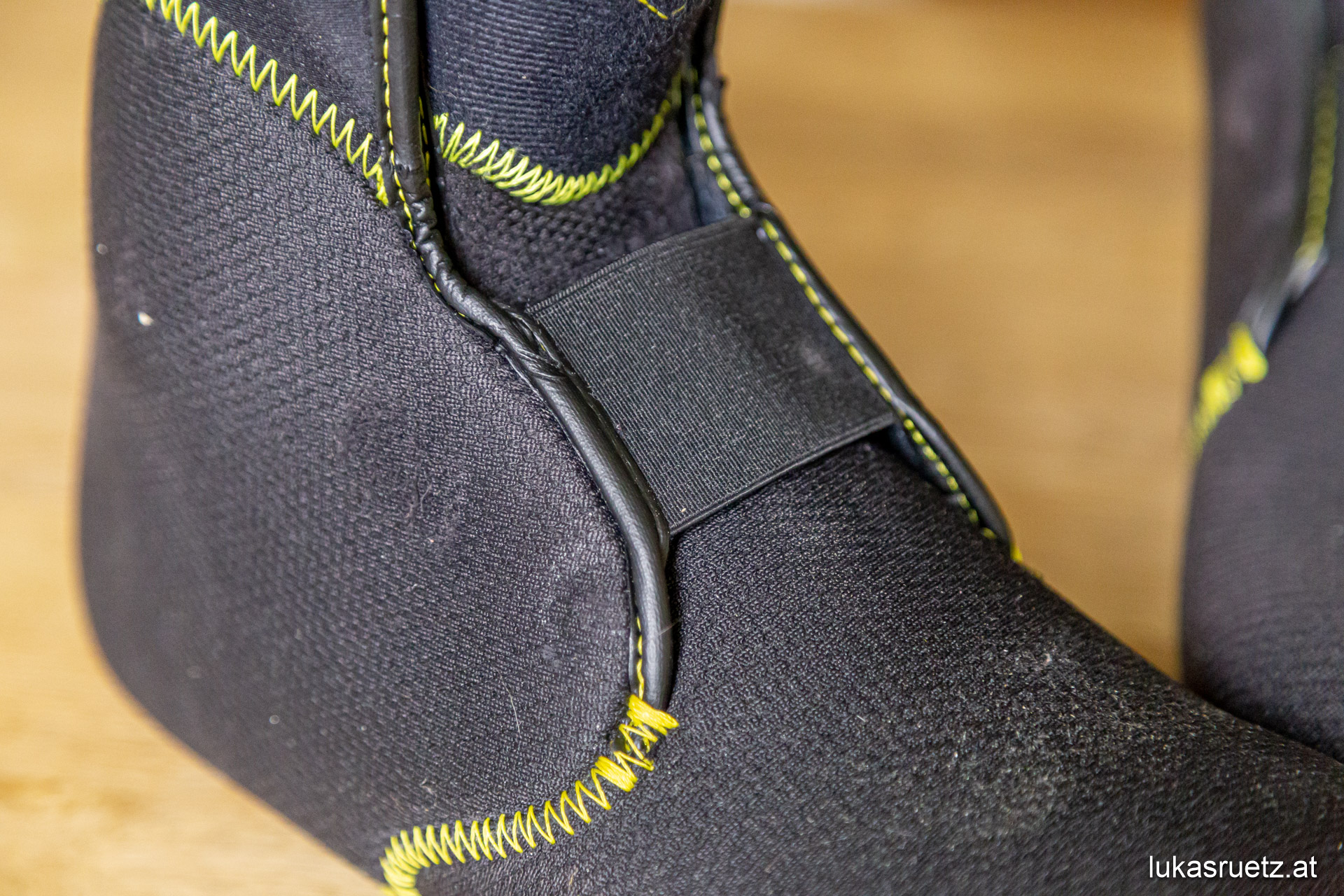
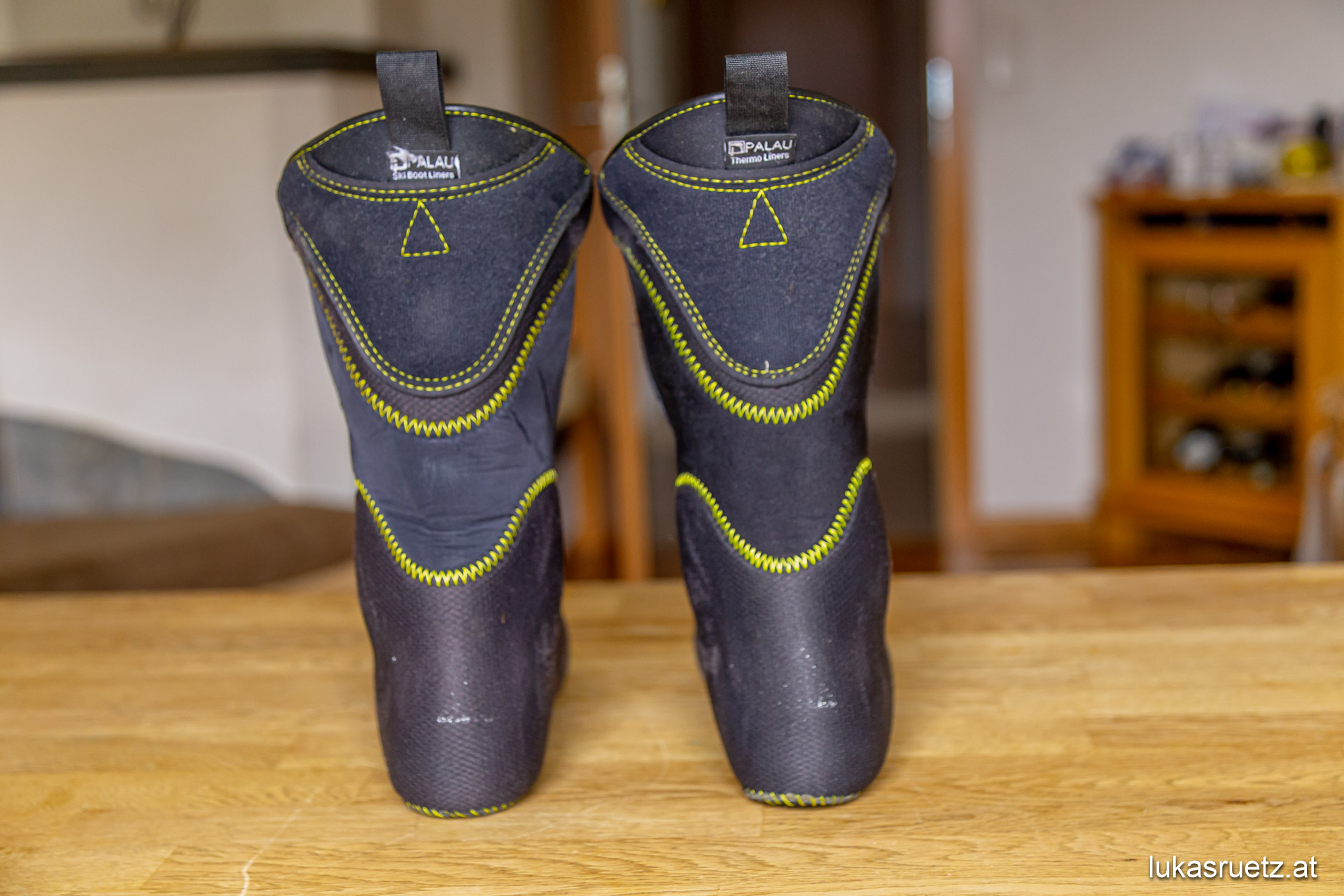
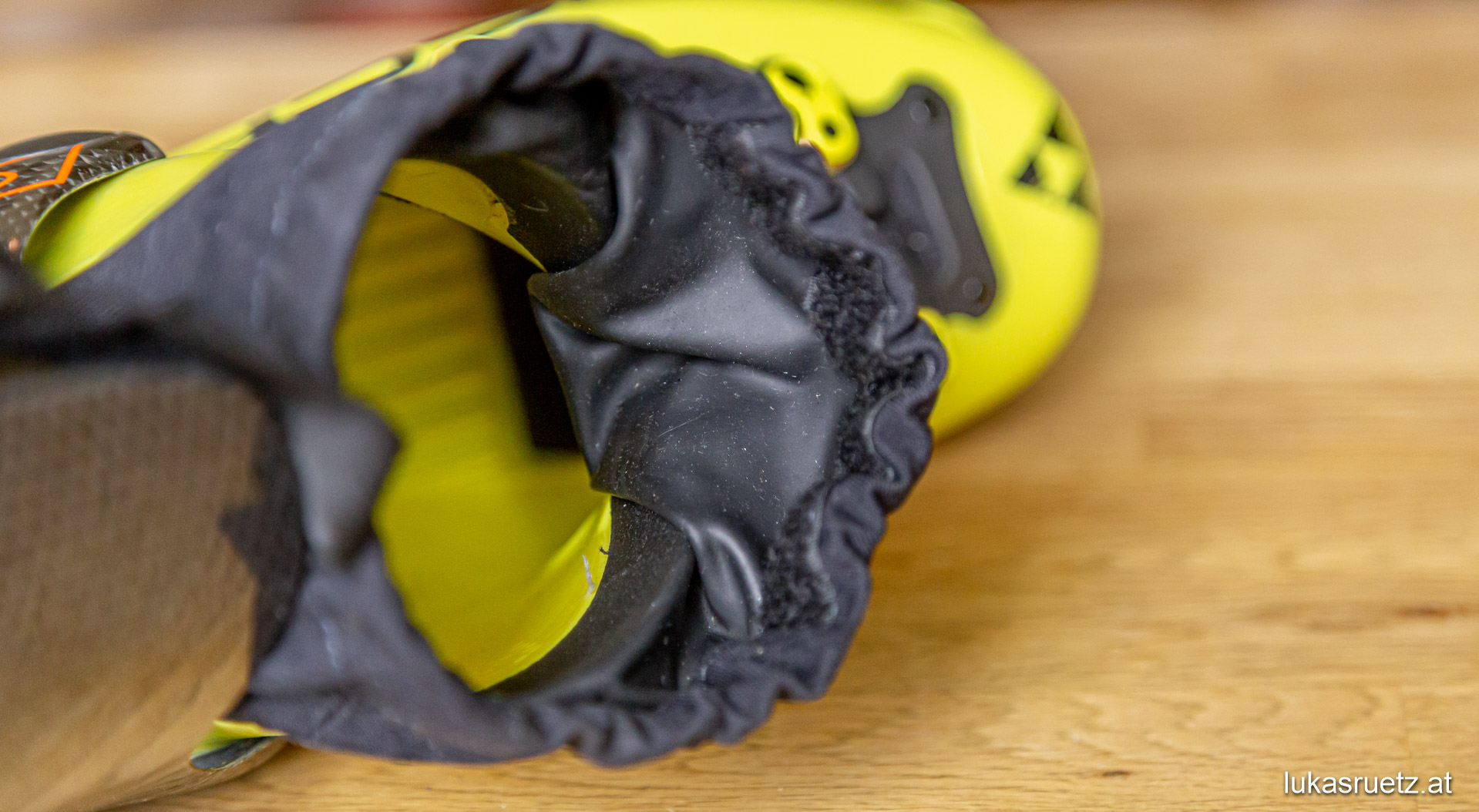
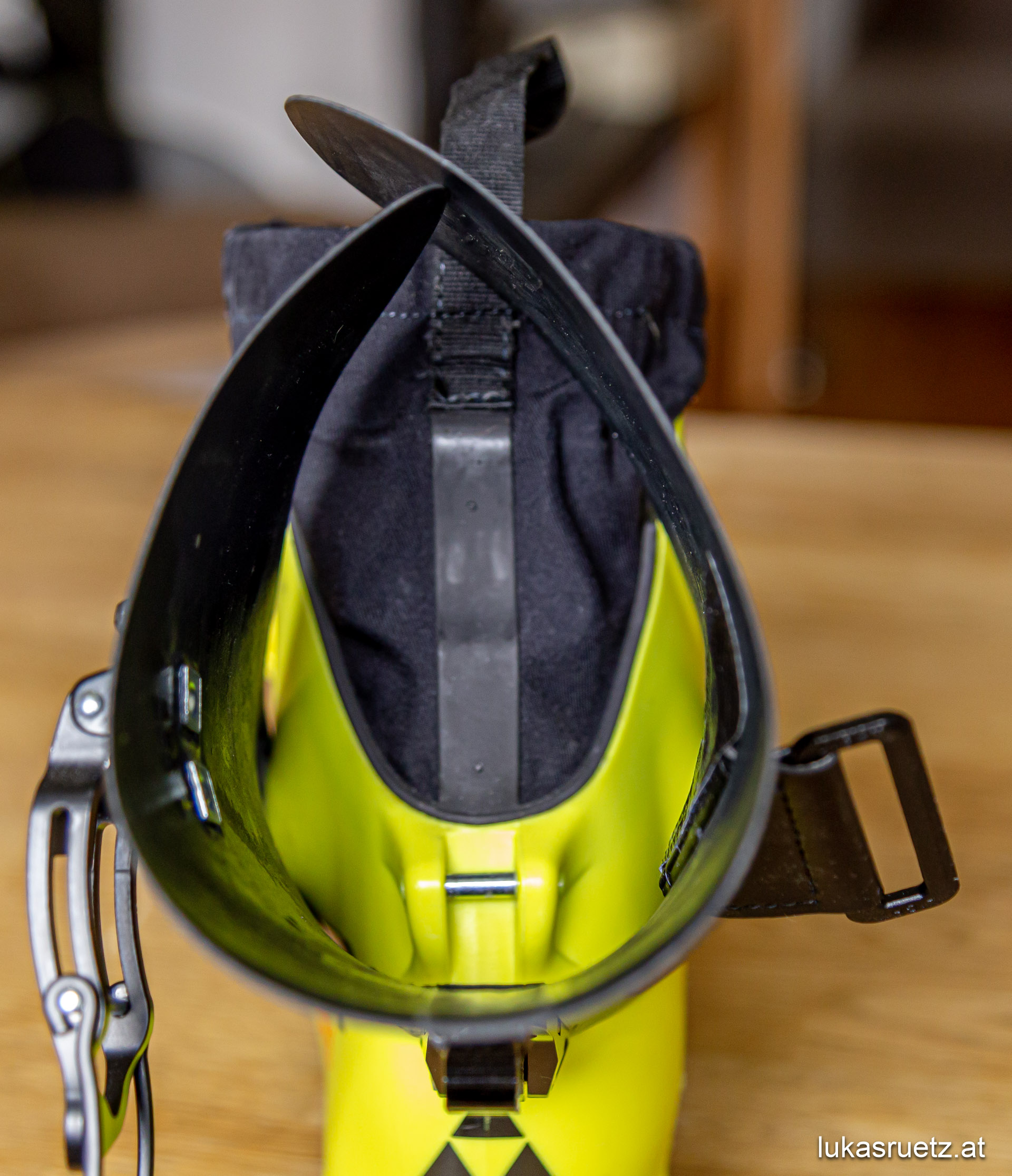
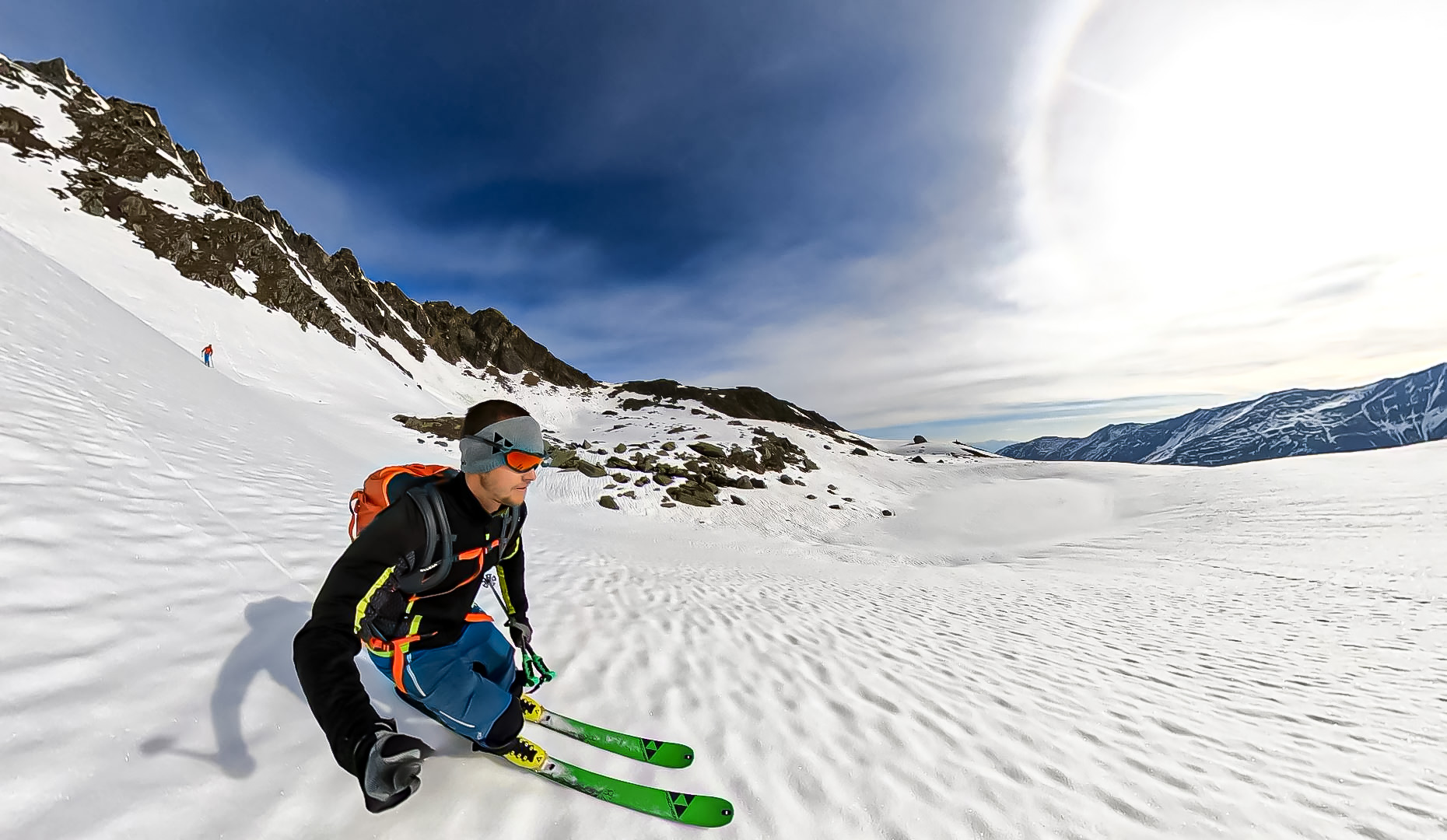
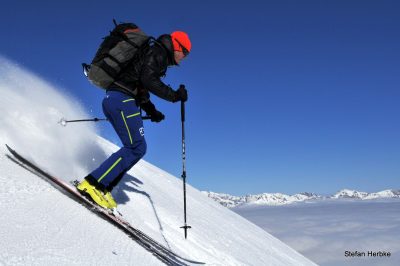
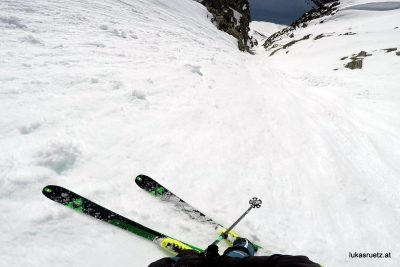
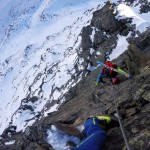
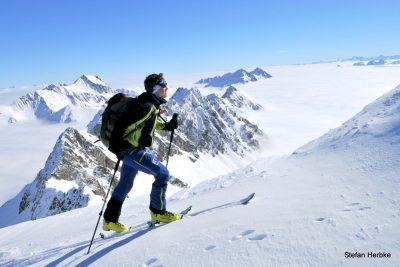

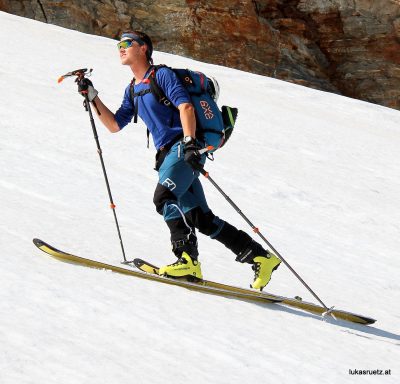
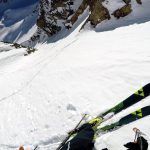
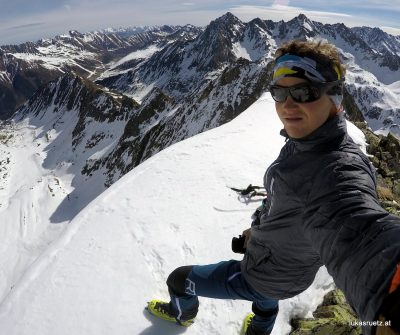
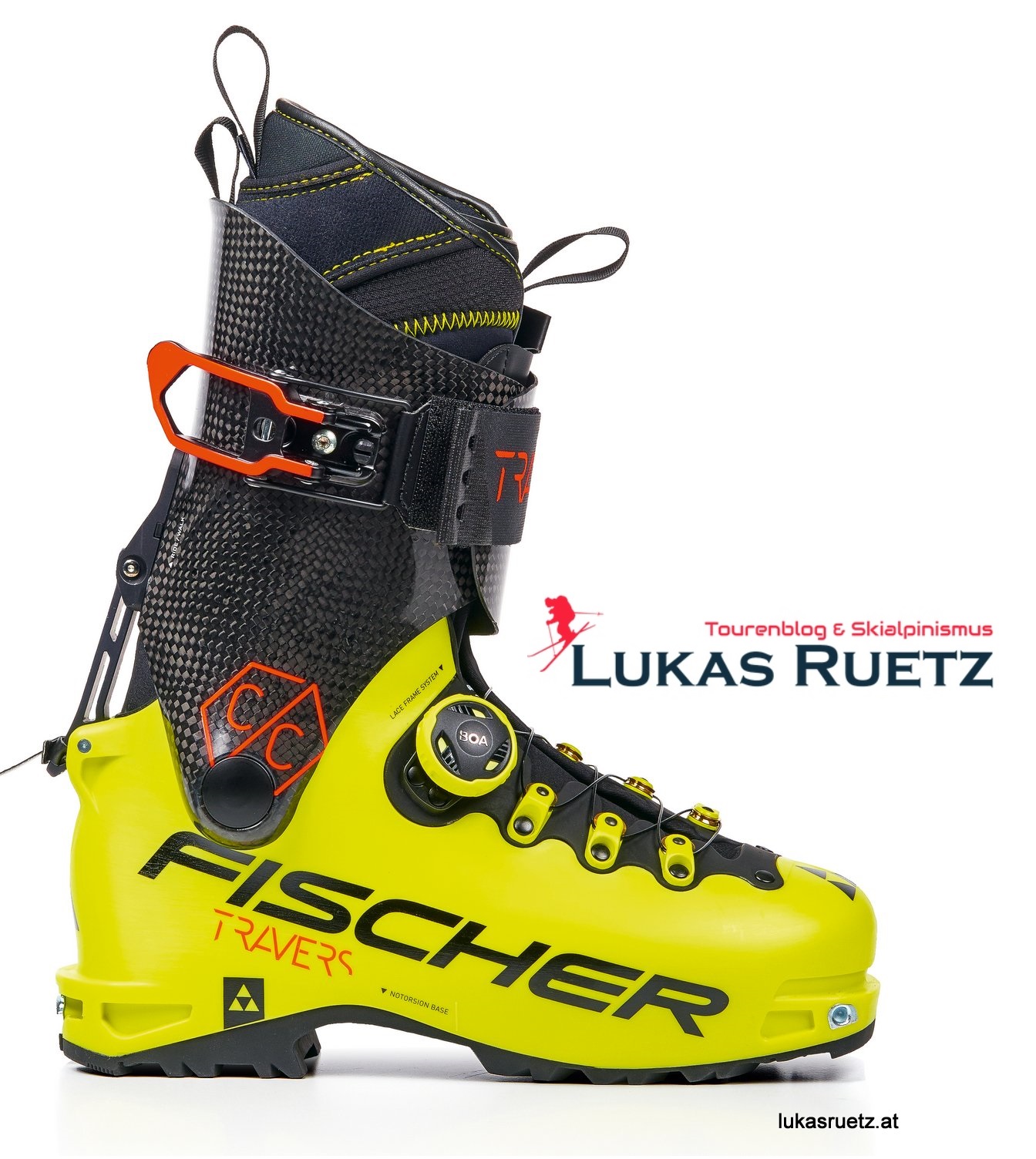
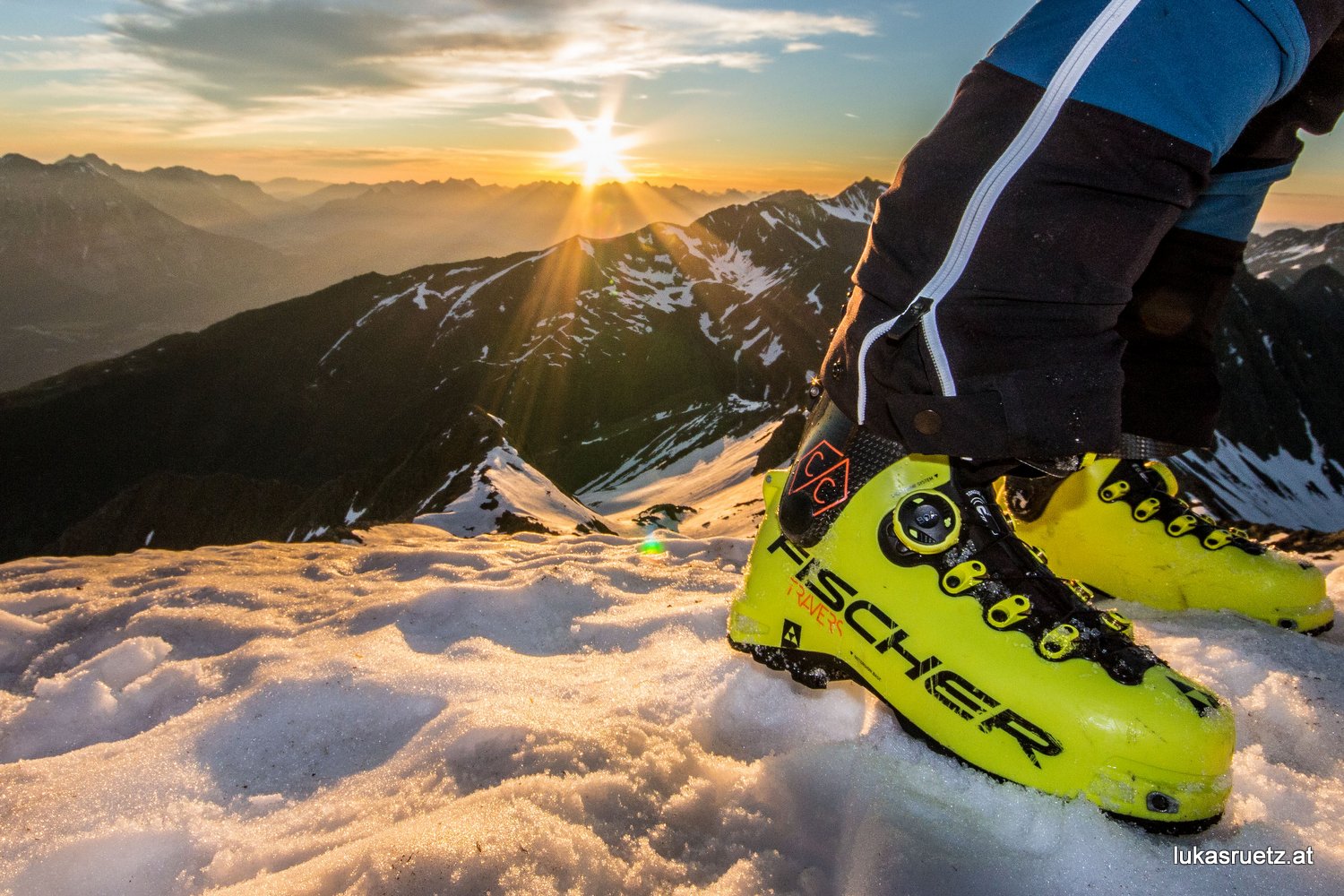
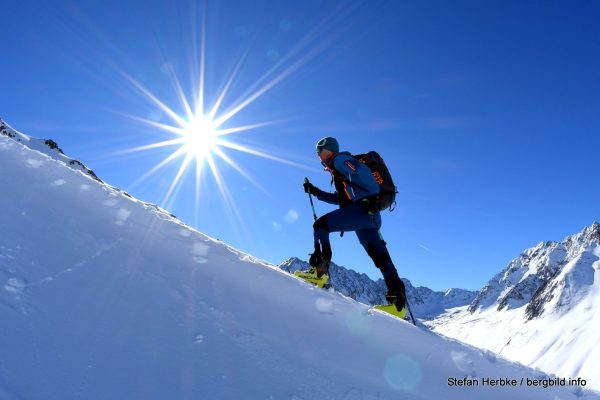
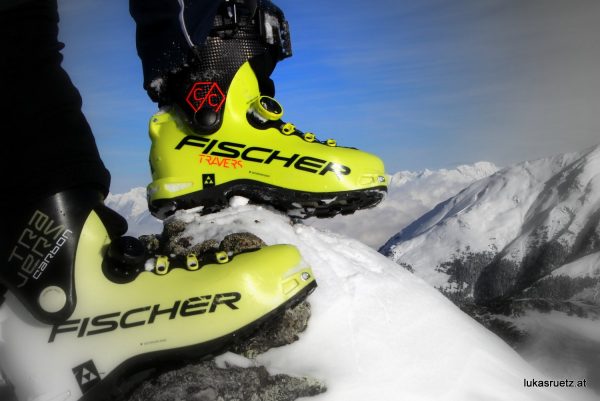
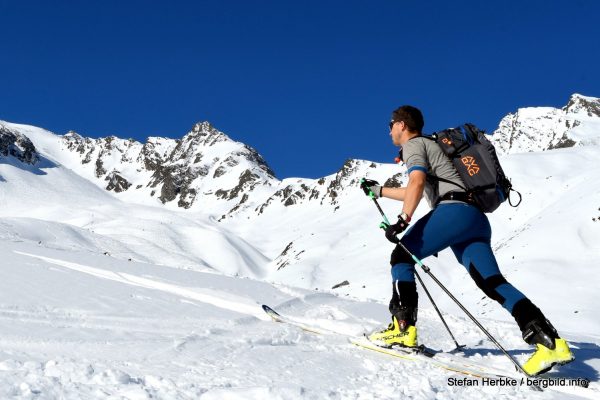
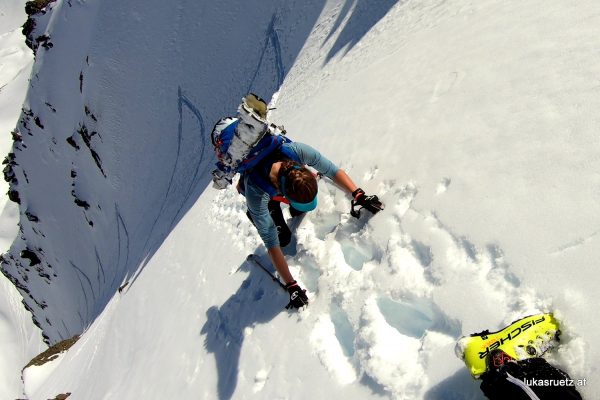
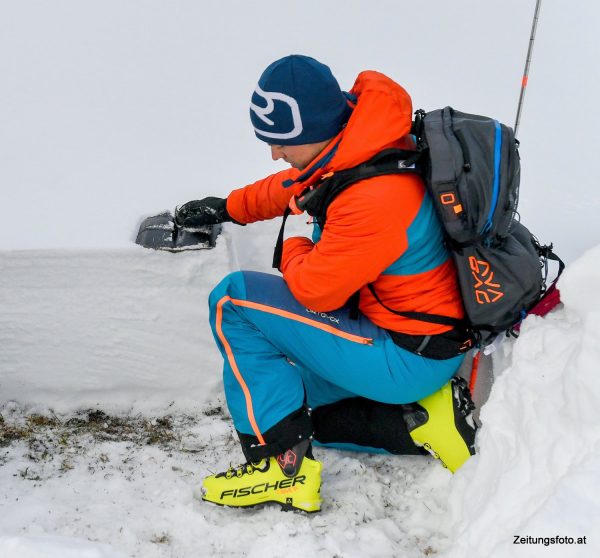
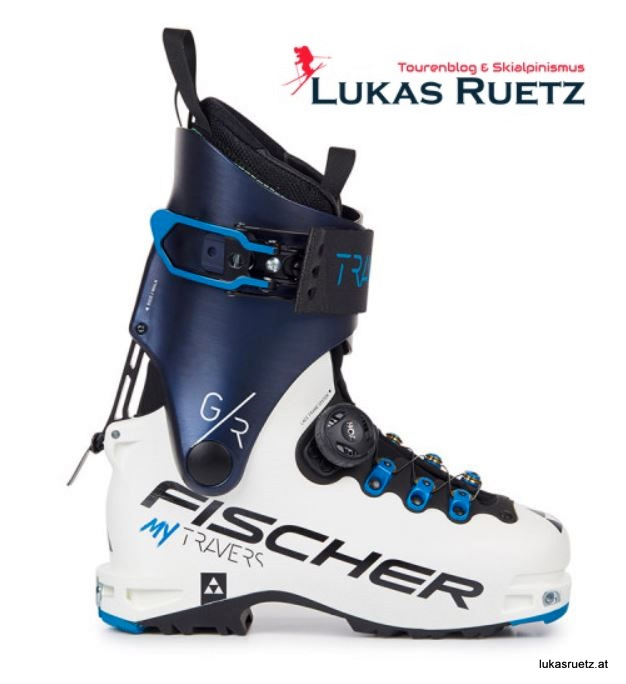
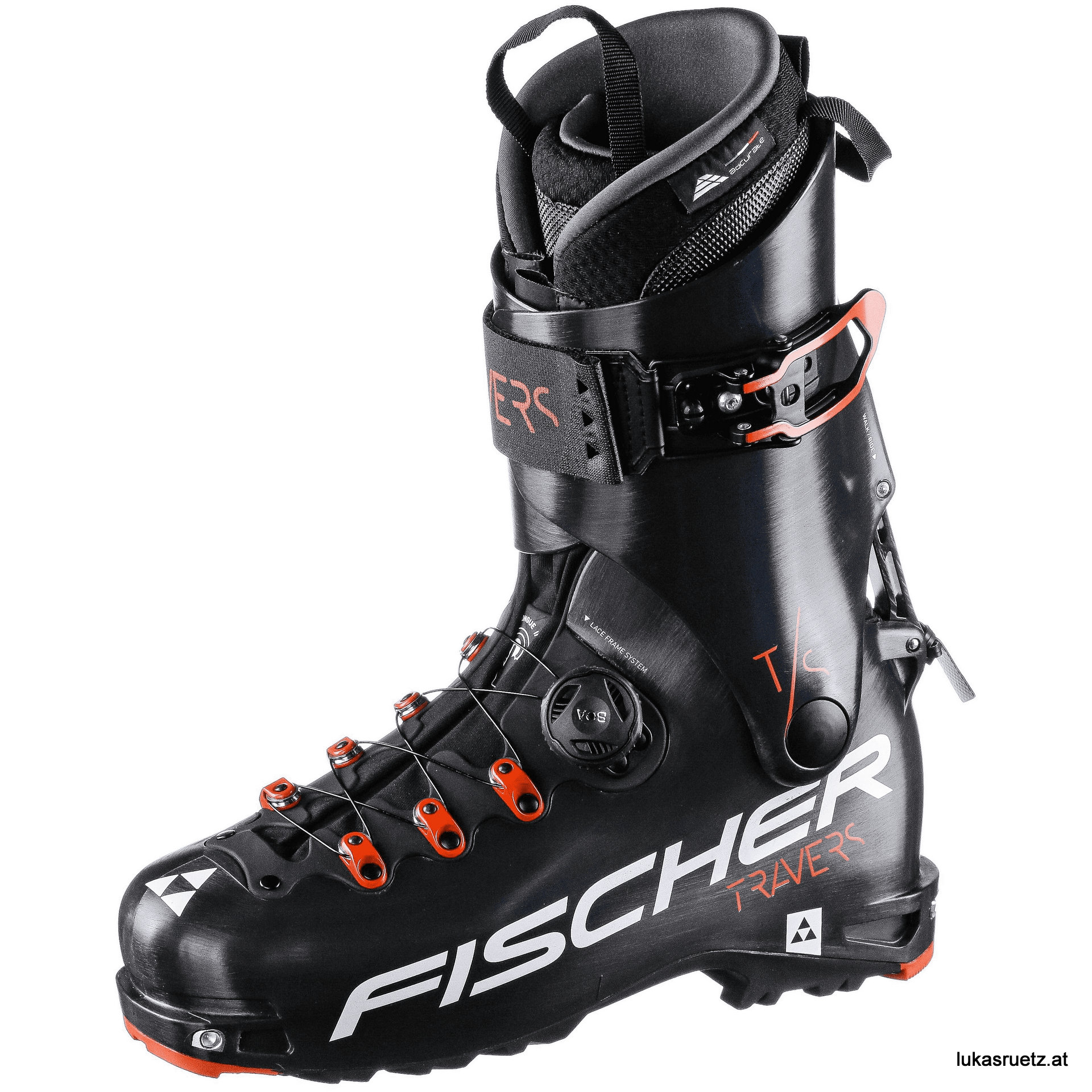
Hallo Lukas!
Vielen Dank für deine Ausführungen. Ich habe die Website von Fischer auf die Größen geprüft, es gibt diese nun auch bis zur Größe 30.5. Weißt du ob hier seitens Fischer auch mal eine Größe MP31 angedacht ist?
lg Hannes
Hello Lukas
I checked the fischer homepage, they have now almost every boot up to MP30.5. Do you know if there will be a size 31 available?
best regards
Hannes
Hello Lukas,
Thanks for the excellent review, just two questions:
1) What would be the maximum ski width you would recommend pairing for Fischer Travers CS Mondo 27.5?
I have Hagan Ultra 82mm 170cm (w/Hagan Pure 8/ATK Crest 8), and Blizzard ZeroG 95mm 178cm (w/ATK C-Raider 12). Would the Travers CS still ride fine with the ZeroG 95 ? I’m 180cm/75kg and an advanced but fit & uphill oriented skier – riding safely and peacefully on the downhill.
2) What would you recommend if my Fischer Travers CS Mondo 27.5 feels just a little bit large? (I’m perfect fit for Mondo 27.0 Scarpa Maestrale) Are there thicker Fischer insoles to reduce volume ? I haven’t found anything on Fischer website – is there another sole manufacturer that would fit well into this boot, to replace the original insolve or add an extra one ?
Thanks
Vaclav
Hi Lukas,
I’m a bit concerned with my weight. I’m 193cm and 93kg. I had the CS on my feet and it felt fantastic – very light, my feet had no conflict points,..however, in downhill mode, my knees reached over my toes by far. My question is would the Travers CC solve this issue or am I simply too heavy? My main goal is mountain touring and backland touring with crampons and ice ax – the descending aka freeriding is at 3rd place.
Thanks a lot for your opinion on that!
mfg
Sebastijan
Hi Sebastijan,
unfortunately the CC isn’t available anymore.
So if you think the CS is not stiff enough for you, maybe the new TRANSALP PRO could be the solution:
https://www.fischersports.com/at_de/transalp-pro
You can purchase the boot beginning in fall of 2021.
Best regards,
Lukas
Hello Lukas. Really appreciate the informative article.
I’m 193cm/100kg and an ok, but not fantastic skier. I get off balance a lot (backseat) and when skiing the way I like to ski, I put a lot of pressure on the cuffs. My skis are 95mm width and I’d go 5-10mm wider if I ever replace them. So while I’d like to reduce from my current 3.6kg of boots, I don’t want to overestimate my ability to compensate for a lack of support downhill. So, to my question: Being generally cost-conscious, I’d like to have your advice on choice between TS, GR, and CS. I’d like to spend the least amount required, but not sacrifice too much downhill performance at my weight and skill level. I’m not at all focused on the 200 grams (-600gr is pretty brilliant already), but simply on the performance aspect. I have no way to try them first.
Thanks a lot for your advice.
Mark
Hi Mark,
I would take the TS in your situation.
Best regards,
Lukas
Hi Lukas,
Great info on the Traverse. I’m actually considering this boot for the coming season, however i’m a bit concerned i’m too heavy for the boot. I weigh 93 kg/190 cm long and ski with Black Diamond Helio 95 in 183 cm length. I have used the Scott cosmos but are looking for a lighter boot which still offers support for the down. I do both one day tours with light pack and multiday tours with heavier pack. I’m considering the Fischer or the Scarpa F1 (which is heavier but also sturdier).
Your thoughts would be much appreciated
Regs
Henrik
Hi Henrik,
the best solution would be a testing day with both of them. Number one priority is that a boot fits well to your feet.
In my opinion the Travers is stiff enough for your setup. But it also depends on your skiing style. In general, light boots are not made for high-speed skiing in Freeride style with cliff drops.
Lukas
Hey, i would ask you one question. What do you thing about pairing fischer ts (gr) with skis scott slight 93 175cm? I have got 80kgs, vipec evo binding. Thanks a lot!
Hi Martin,
in my opinion this would be a good combo.
Best regards,
Lukas